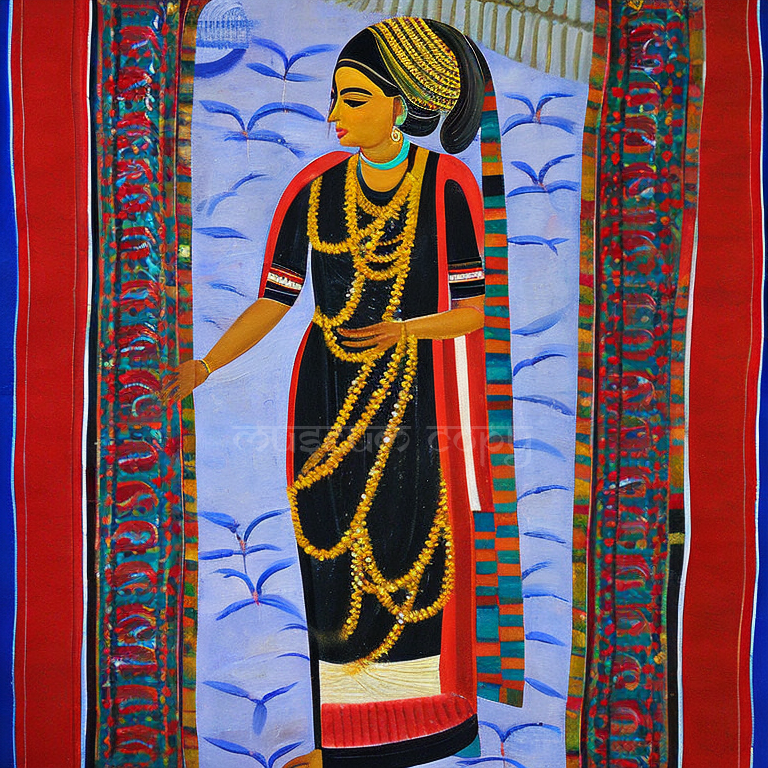Profile: Jamini Roy
•

Jamini Roy was a renowned Indian artist who is widely recognized for his significant contributions to the modern art movement in India. Born on April 11, 1887, in Beliatore, a small village in Bengal, he emerged as a leading figure in the Indian art scene, establishing a distinctive artistic style that blended traditional Indian art forms with modernist influences.
Jamini Roy initially received formal training at the Government College of Art in Kolkata, where he explored European academic techniques and mastered the art of oil painting. However, he soon grew dissatisfied with the Western artistic conventions and sought to reconnect with his cultural roots by turning towards indigenous art forms and techniques.
Jamini Roy initially received formal training at the Government College of Art in Kolkata, where he explored European academic techniques and mastered the art of oil painting. However, he soon grew dissatisfied with the Western artistic conventions and sought to reconnect with his cultural roots by turning towards indigenous art forms and techniques.
Inspirations from Tribal Art
Inspired by the folk and tribal art traditions of rural Bengal, Jamini Roy began to experiment with a more simplified and stylized approach to painting. He drew inspiration from the terracotta temple sculptures, Kalighat paintings, and traditional patachitra art, adopting their bold lines, flat colors, and narrative compositions.
Jamini Roy's Contributions
One of Jamini Roy's notable contributions was his shift from using Western materials like oils to indigenous materials such as tempera, natural dyes, and earth pigments. This transition allowed him to capture the essence of Indian folk art and infuse it with a contemporary sensibility. His artworks often depicted rural scenes, mythological figures, and everyday life, portraying them with a sense of vitality and a distinct regional identity.
Among his most acclaimed works is "Mother and Child," which portrays the tender bond between a mother and her child, emphasizing simplicity and emotional depth. The "Gopini" series showcases his fascination with rural women adorned in traditional attire, while the "Bride and Two Companions" highlights his ability to capture the grace and elegance of Indian women.
Jamini Roy's "Krishna-Lila" series is another significant body of work, inspired by Lord Krishna's divine plays and folk traditions associated with the deity. These paintings convey a sense of joy, movement, and spiritual connection, representing the artist's deep engagement with his cultural heritage.
Among his most acclaimed works is "Mother and Child," which portrays the tender bond between a mother and her child, emphasizing simplicity and emotional depth. The "Gopini" series showcases his fascination with rural women adorned in traditional attire, while the "Bride and Two Companions" highlights his ability to capture the grace and elegance of Indian women.
Jamini Roy's "Krishna-Lila" series is another significant body of work, inspired by Lord Krishna's divine plays and folk traditions associated with the deity. These paintings convey a sense of joy, movement, and spiritual connection, representing the artist's deep engagement with his cultural heritage.
Jamini Roy's Accolades
Throughout his career, Jamini Roy received numerous accolades and recognition both in India and abroad. His artworks were exhibited in prestigious galleries, including the Calcutta Art Club, the Royal Academy of Arts in London, and the Venice Biennale. He was also honored with several awards, including the Padma Bhushan, one of India's highest civilian honors, in 1954.
Jamini Roy's Legacy
Jamini Roy's artistic legacy is characterized by his ability to bridge the gap between traditional and modern art, drawing inspiration from rural folk traditions while exploring new artistic expressions. His work continues to inspire artists and art enthusiasts, and his influence on Indian art remains profound. Jamini Roy's dedication to preserving and celebrating India's cultural heritage through his art has secured him a prominent place in the pantheon of Indian artists.